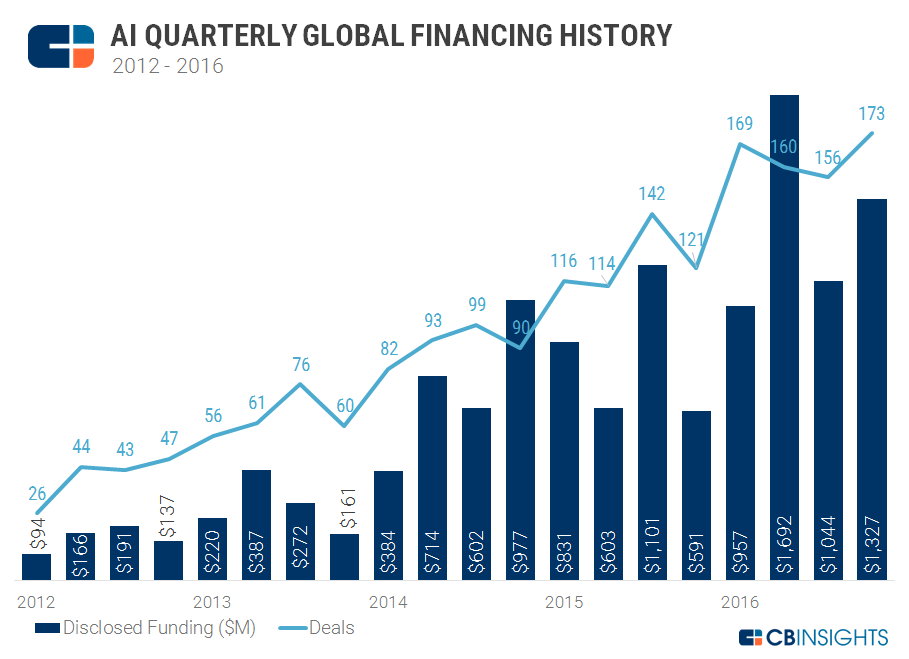Technology
An Introduction to Algorithms
In the modern world, algorithms do much of the digital heavy lifting.
Algorithms control the inner-workings of everything from particle accelerators to stock markets. They determine the news you see, what search results you get, how computers learn, and what gets recommended to you on Netflix or Amazon.
In short, society couldn’t function as-is without algorithms – and as we lean on them to run more things, it becomes more important for us to learn what they are and what they do.
Algorithms 101
Today’s infographic from Futurism digs into the origins of algorithms, and how they impact our everyday lives.

What is an Algorithm?
An algorithm is a predetermined set of steps for a computer to accomplish a task. It’s basically an instruction manual. And as in life, instruction manuals can be simple (e.g. building an Ikea side table) or extremely complex (e.g. filing a patent).
Below is “Sorting Out Sorting” (1981), a timeless primer on sorting methods. It clearly demonstrates the way computers approach sorting vast quantities of information by following a set of instructions.
A famous example of an algorithm is Google’s PageRank, which determines the order in which websites appear in Google’s search rankings. PageRank’s methodology is explained succinctly and effectively in the video below.
By building on a stochastic model called the Markov chain, PageRank revolutionized the way the world accesses information. The power of this algorithm is partially responsible for Google’s ability to control 41% of the online ad market, which is where Alphabet still generates the majority of its revenue.
How Algorithms Influence Society
Social platforms play a substantial role in delivering news and information to us. In fact, an estimated 44% of the U.S. population consumes news via Facebook. The more we rely on social networks to supply us with news, the more algorithms will influence what information we’re exposed to. Since social platforms are designed to serve us customized content, there is a growing concern that we are creating online echo chambers that crowd out opposing views.
Algorithms also have a profound influence on our economy. Roughly 50% of the market moves through high frequency trading – the process of using dedicated programs to make automated trading decisions to place orders. Large portions of our economy are now managed with very little human intervention.
In recent years, progress in the field of artificial intelligence has generated an abundance of interest and excitement. Deep learning (a technique for implementing machine learning) is making all kinds of machine-assisted tasks possible. Preventive healthcare, driverless vehicles, drug discovery, bioinformatics, and hyper-customized recommendations on shopping websites are all here today or coming down the pipeline.
Deep Learning
The remarkable thing about deep learning is that it goes beyond what any human can program a computer to do. Programmers have instead used a learning algorithm – fueled by terabytes of data – to train it to perform complex tasks. The computer essentially figures out for itself how to recognize the desired objects, text, or actions.
Breakthroughs like this are the reason AI startups are now receiving billions of dollars of funding.

The Algorithmic Economy
The potential upside for technology providers are enormous, particularly if proprietary processes work on a global scale. An era where “things” will communicate autonomously and take actions without human intervention is sure to profoundly impact our society.
The big question is, what will we do once computers and algorithms are taking care of business?
Technology
All of the Grants Given by the U.S. CHIPS Act
Intel, TSMC, and more have received billions in subsidies from the U.S. CHIPS Act in 2024.

All of the Grants Given by the U.S. CHIPS Act
This was originally posted on our Voronoi app. Download the app for free on iOS or Android and discover incredible data-driven charts from a variety of trusted sources.
This visualization shows which companies are receiving grants from the U.S. CHIPS Act, as of April 25, 2024. The CHIPS Act is a federal statute signed into law by President Joe Biden that authorizes $280 billion in new funding to boost domestic research and manufacturing of semiconductors.
The grant amounts visualized in this graphic are intended to accelerate the production of semiconductor fabrication plants (fabs) across the United States.
Data and Company Highlights
The figures we used to create this graphic were collected from a variety of public news sources. The Semiconductor Industry Association (SIA) also maintains a tracker for CHIPS Act recipients, though at the time of writing it does not have the latest details for Micron.
| Company | Federal Grant Amount | Anticipated Investment From Company |
|---|---|---|
| 🇺🇸 Intel | $8,500,000,000 | $100,000,000,000 |
| 🇹🇼 TSMC | $6,600,000,000 | $65,000,000,000 |
| 🇰🇷 Samsung | $6,400,000,000 | $45,000,000,000 |
| 🇺🇸 Micron | $6,100,000,000 | $50,000,000,000 |
| 🇺🇸 GlobalFoundries | $1,500,000,000 | $12,000,000,000 |
| 🇺🇸 Microchip | $162,000,000 | N/A |
| 🇬🇧 BAE Systems | $35,000,000 | N/A |
BAE Systems was not included in the graphic due to size limitations
Intel’s Massive Plans
Intel is receiving the largest share of the pie, with $8.5 billion in grants (plus an additional $11 billion in government loans). This grant accounts for 22% of the CHIPS Act’s total subsidies for chip production.
From Intel’s side, the company is expected to invest $100 billion to construct new fabs in Arizona and Ohio, while modernizing and/or expanding existing fabs in Oregon and New Mexico. Intel could also claim another $25 billion in credits through the U.S. Treasury Department’s Investment Tax Credit.
TSMC Expands its U.S. Presence
TSMC, the world’s largest semiconductor foundry company, is receiving a hefty $6.6 billion to construct a new chip plant with three fabs in Arizona. The Taiwanese chipmaker is expected to invest $65 billion into the project.
The plant’s first fab will be up and running in the first half of 2025, leveraging 4 nm (nanometer) technology. According to TrendForce, the other fabs will produce chips on more advanced 3 nm and 2 nm processes.
The Latest Grant Goes to Micron
Micron, the only U.S.-based manufacturer of memory chips, is set to receive $6.1 billion in grants to support its plans of investing $50 billion through 2030. This investment will be used to construct new fabs in Idaho and New York.
-

 Energy1 week ago
Energy1 week agoThe World’s Biggest Nuclear Energy Producers
-

 Money2 weeks ago
Money2 weeks agoWhich States Have the Highest Minimum Wage in America?
-

 Technology2 weeks ago
Technology2 weeks agoRanked: Semiconductor Companies by Industry Revenue Share
-

 Markets2 weeks ago
Markets2 weeks agoRanked: The World’s Top Flight Routes, by Revenue
-

 Countries2 weeks ago
Countries2 weeks agoPopulation Projections: The World’s 6 Largest Countries in 2075
-

 Markets2 weeks ago
Markets2 weeks agoThe Top 10 States by Real GDP Growth in 2023
-

 Demographics2 weeks ago
Demographics2 weeks agoThe Smallest Gender Wage Gaps in OECD Countries
-

 United States2 weeks ago
United States2 weeks agoWhere U.S. Inflation Hit the Hardest in March 2024














